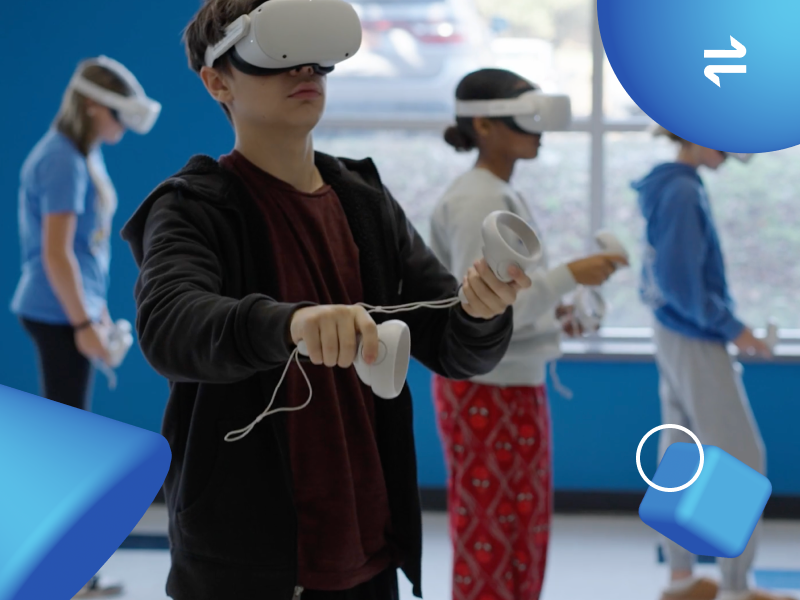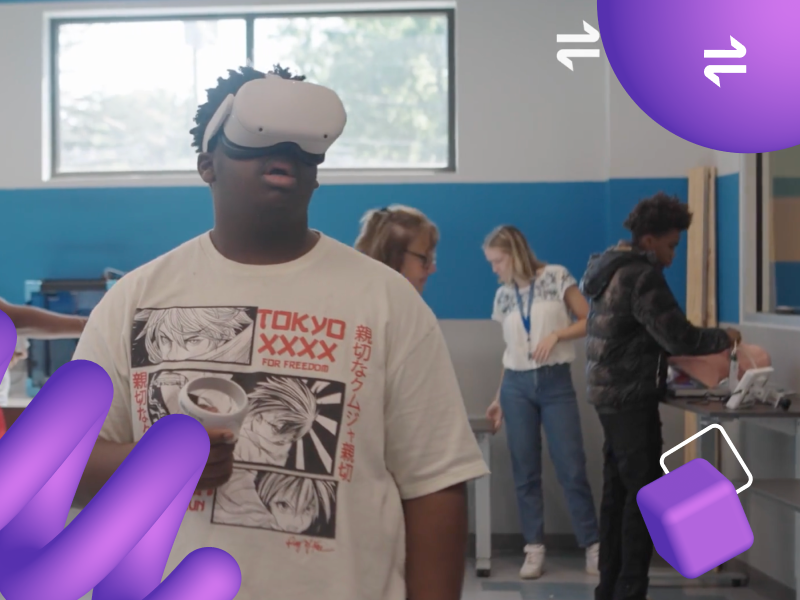Virtual reality (VR) training can be highly effective at delivering skills training in realistic, simulated environments for a variety of hands-on occupations in industries like manufacturing, automotive, electrical construction, aviation maintenance, healthcare and more. That being said, introducing virtual reality as a student learning option can raise questions regarding its effectiveness when supplementing hands-on learning in the skilled trades.
VR training has been shown to be effective at teaching individuals new skills, but it’s also a great tool to engage students and hold their attention in a way that traditional learning environments have a harder time achieving. VR simulations can give individuals a fun and engaging way to explore different industries and learn the skills necessary to break into those career paths.
Is VR Training Effective?
In 2022, the National Center for Construction Education and Research (NCCER) along with the Associated Builders and Contractors of Illinois (ABC Illinois) conducted a pilot study to evaluate potential improvements in training outcomes and engagement when introducing VR simulations to the class content.
Two classes performed two assigned NCCER tasks — circular saw and electric drill training. One class was set in a traditional lab, while the other class incorporated VR learning. Both classes included instruction, instructor demonstration, and the opportunity to demonstrate mastery during guided practice. An expert evaluator assessed each learner’s performance using the same rubric.
The pilot study showed that incorporating VR skills training was effective, with students in the VR class actually performing better than the students who were in the traditional lab, boasting assessment scores of 75% vs 53.46%. Additionally, 100% of the VR class secured employment following training, as opposed to 69% for the non-VR class.
Benefits of VR Training
VR training programs boost confidence
Students often struggle to stay engaged and present in traditional classroom settings. Finding new ways to get students excited about what they’re learning is a constant challenge for instructors.
In 2023, Transfr partnered with Arkansas State University (ASU) Three Rivers Career Center to measure student experiences with VR learning by analyzing survey data. The survey gathered information about students’ comfort level with VR, engagement, and confidence levels using simulations. Results of the Arkansas Efficacy Study were positive overall, with 67% of students reporting that their confidence in learning had positively changed since using the VR simulations and 71% reporting a positive change in perceived learning.
VR training is engaging in a virtual environment
Following their participation in VR training, students in the ABC Illinois/NCCER pilot study reported increased interest and engagement with the subject matter.
“It was really fun using VR.” says one student. “It gives you real world scenarios on how to use power tools. I’m not just going [into the workforce] not knowing how to use the tool.”
“VR training is different!” reports another student. “It’s really cool to learn about tools and safety and to get to apply those lessons in VR and [to be able to gain] a real idea of what to expect on the job.”
Bringing an exciting and engaging technology to the classroom can help unlock interests and competencies that might have otherwise never been brought to the surface. This sort of engagement was especially notable for John Bratton, an instructor at ASU Three Rivers:
“It’s great to see how well students responded to the VR headsets, how quickly they adapted and how engaged they were with the simulations.” says Bratton. “The students put their phones down, focused on the training simulation, and were able to complete the modules without distraction.”
VR training augments instructors, helping teachers manage a classroom
Another benefit of VR comes in the form of AI coaches who are able to provide personalized instruction. This can free up classroom instructors to devote more time to work one-on-one with students in the lab. Digital coaches are armed with subject matter expertise derived from humans with decades in their fields, as well as unlimited patience. Students can learn at their own pace in a supportive and safe environment free from outside distractions and can help reduce the impacts of biases based on gender, race, or other differences.
Transfr’s AI instructors can also help augment instructors not only by supporting existing programs, but can also provide the resources necessary to start entire new programs! Imagine trying to launch an aviation maintenance program from the ground up: Not only would you need airplanes, specialized equipment, and massive hangers to store it all. With VR aviation maintenance simulations, much of the course curriculum could take place in a virtual environment, with in-person instructors leading the way and providing additional context and individualized attention in the laboratory setting.
Giving students a better future with VR skills training for skill development
Technology’s advance can be hard to keep up with, but it is something educators are tasked with to stay relevant. By incorporating new and exciting technologies in the classroom, instructors can increase student retention and comprehension, as well as satisfaction in their learning. Instructors can also benefit by being able to share the responsibility of delivering content and having more 1:1 time with their students.
“Transfr is a great company to work with and the technology that they have developed creates stimulating real-world experiences for students.” says Shelton State Ready to Work instructor Molly Wagner. “We’re leveraging this cutting-edge technology to try to create excitement for career exploration in prospective students.”
Want to read more stories of how VR training is effective with Transfr?



